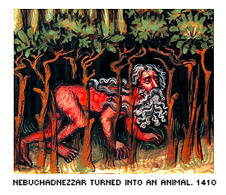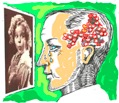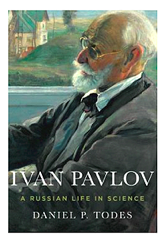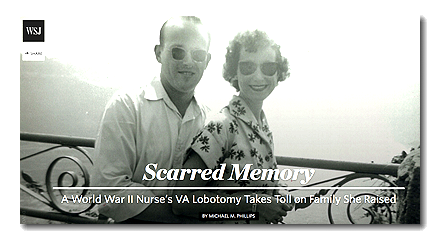How Have We Depicted Madness Through History
2015/04/27 11:30 Filed in: Abnormal-Clinical History

Neuroscience of Narrative
2015/03/03 11:45 Filed in: Narrative Biopsychology

Review of Todes' Ivan Pavlov: A Russian Life in Science
2015/01/26 15:02

Scarred Memory: A World War II Nurse's Lobotomy

by Michael M. Phillips
"Dorothy is one of the last survivors among roughly 2,000 psychiatrically ill veterans the Veterans Administration lobotomized in the 1940s and 1950s. The Wall Street Journal in 2013 first detailed the VA lobotomy program and profiled the troubled life of World War II pilot Roman Tritz, 91, the only living lobotomized veteran the newspaper could locate at the time.
Lawmakers then asked the VA to find other surviving lobotomized veterans. VA headquarters, which says its files on such old cases are archived and difficult to access, hadn’t found any other survivors when Dorothy’s family contacted the Journal."
Lives in the Asylum

A collection of four stories gathered on the Longreads blog site.
1. "Something More Wrong" (Katherine B. Olson, The Big Roundtable, July 2013)
2. "Mentally Unfit" (Zachary McDermott, Gawker, April 2014)
3. "My Lovely Wife in the Psych Ward." (Mark Luckach, Pacific Standard, January 2015)
4. "Mr Bad Weekend" (Alan Hanson, Matter, January 2015)